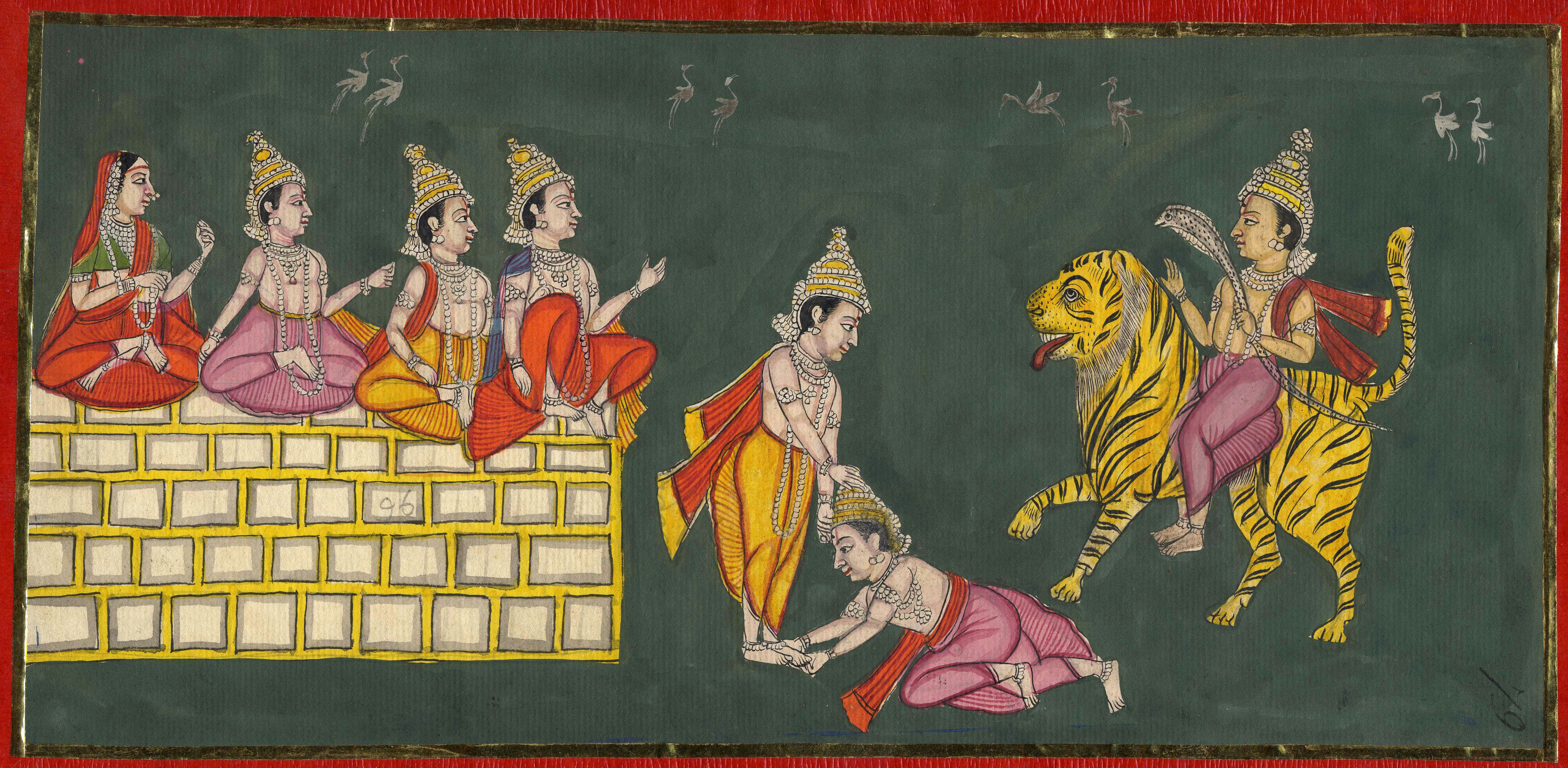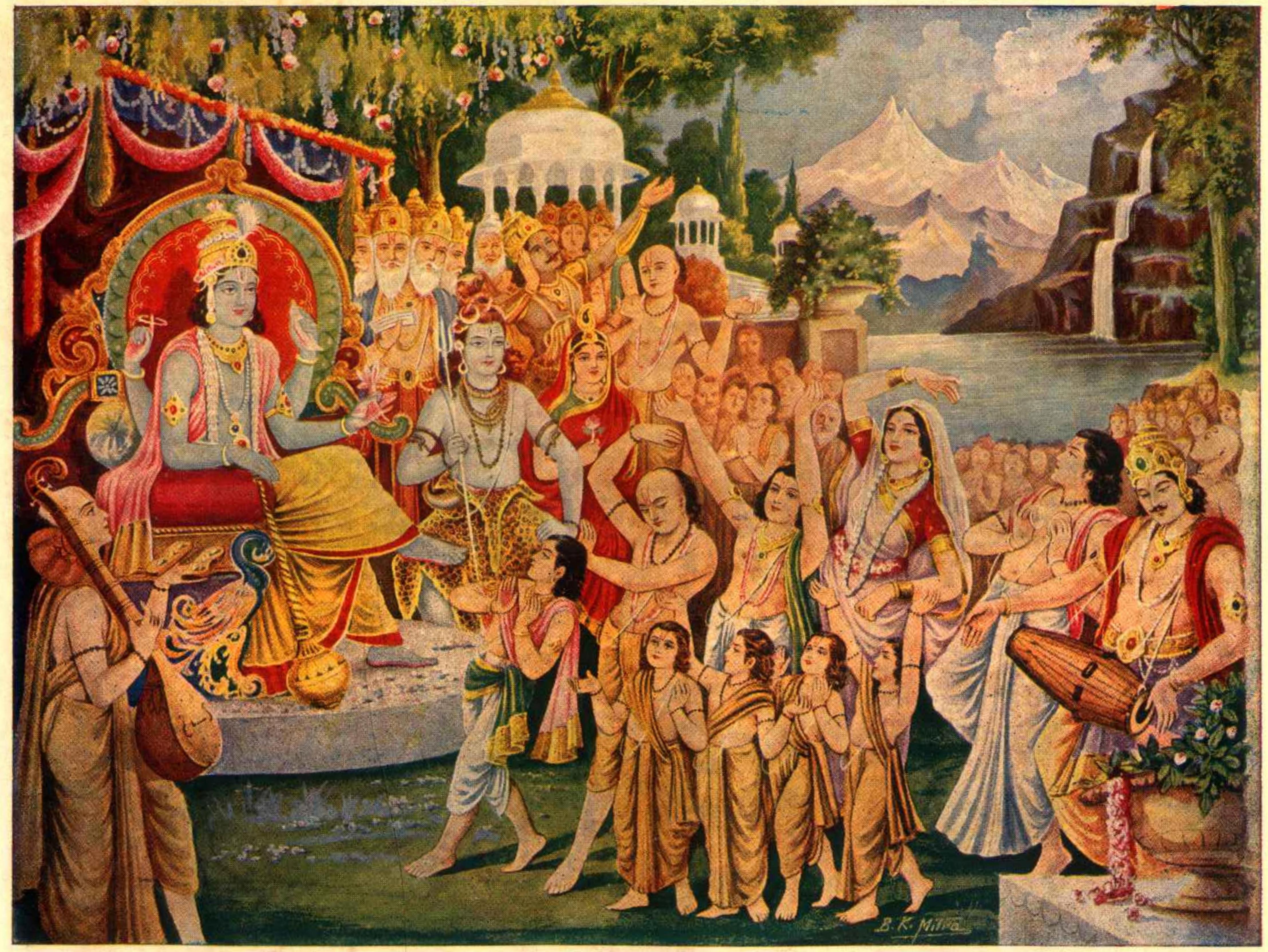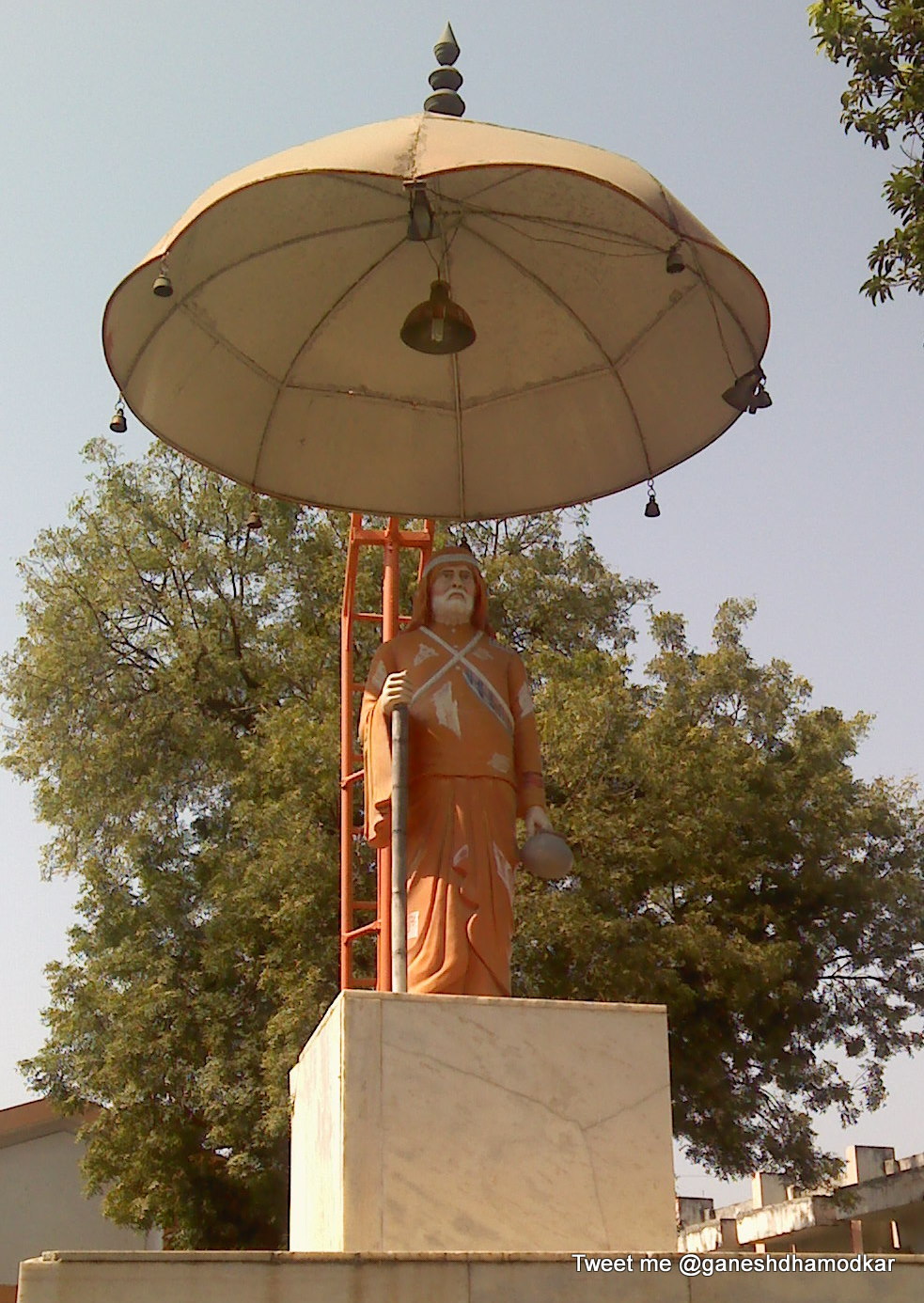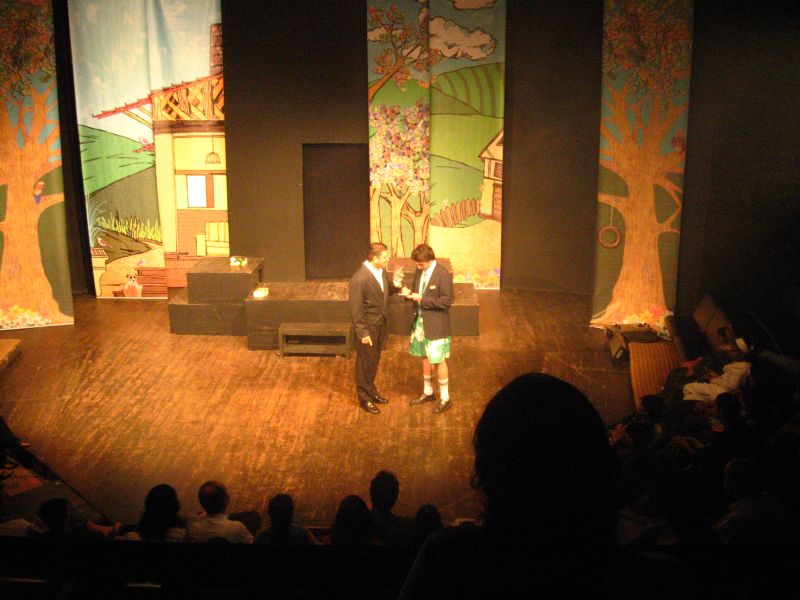|
Paresh Mokashi
Paresh Mokashi (born 6 February 1969) is an Indian filmmaker, producer, actor and Theatre director-producer; working predominantly in Marathi cinema and Marathi theatre. He started working as a backstage worker for theatre and did few minor roles for plays as well as films. Mokashi made his directorial debut for theatre with the Marathi play, ''Sangeet Debuchya Mulee'' in 1999. He continued to work for theatre and made his directorial debut for cinema with the 2009 Marathi feature film, '' Harishchandrachi Factory''. The film depicts the making of India's first full-length feature film, '' Raja Harishchandra'' (1913), made by Dadasaheb Phalke. The film was acclaimed critically and won several awards. It was also selected as India's official entry to 82nd Academy Awards in the Best Foreign Language Film category. Personal life Paresh Mokashi was born to a Maharashtrian family in Pune and was brought up in Lonavla. He is a grandson of a noted Marathi writer D. B. Mokas ... [...More Info...] [...Related Items...] OR: [Wikipedia] [Google] [Baidu] |
Pune
Pune (; ; also known as Poona, ( the official name from 1818 until 1978) is one of the most important industrial and educational hubs of India, with an estimated population of 7.4 million As of 2021, Pune Metropolitan Region is the largest in Maharashtra by area, with a geographical area of 7,256 sq km. It has been ranked "the most liveable city in India" several times. Pune is also considered to be the cultural and educational capital of Maharashtra. Along with the municipal corporation area of PCMC, PMC and the three cantonment towns of Camp, Khadki, and Dehu Road, Pune forms the urban core of the eponymous Pune Metropolitan Region (PMR). Situated {{convert, 560, m, 0, abbr=off above sea level on the Deccan plateau, on the right bank of the Mutha river,{{cite web , last=Nalawade , first=S.B. , url=http://www.ranwa.org/punealive/pageog.htm , title=Geography of Pune Urban Area , publisher=Ranwa , access-date=4 April 2008 , archive-url=https://web.archive.org/web/20071 ... [...More Info...] [...Related Items...] OR: [Wikipedia] [Google] [Baidu] |
Mumbai
Mumbai (, ; also known as Bombay — the official name until 1995) is the capital city of the Indian state of Maharashtra and the ''de facto'' financial centre of India. According to the United Nations, as of 2018, Mumbai is the second-most populous city in India after Delhi and the eighth-most populous city in the world with a population of roughly 20 million (2 crore). As per the Indian government population census of 2011, Mumbai was the most populous city in India with an estimated city proper population of 12.5 million (1.25 crore) living under the Brihanmumbai Municipal Corporation. Mumbai is the centre of the Mumbai Metropolitan Region, the sixth most populous metropolitan area in the world with a population of over 23 million (2.3 crore). Mumbai lies on the Konkan coast on the west coast of India and has a deep natural harbour. In 2008, Mumbai was named an alpha world city. It has the highest number of millionaires and billionaires among all ... [...More Info...] [...Related Items...] OR: [Wikipedia] [Google] [Baidu] |
Varkari
Warkari (Marathi: वारकरी; Pronunciation: �aːɾkəɾiː Meaning: 'The one who performs the ''Wari''') is a sampradaya (religious movement) within the bhakti spiritual tradition of Hinduism, geographically associated with the Indian state of Maharashtra. Warkaris worship Vitthal (also known as Vithoba), the presiding deity of Pandharpur, regarded as a form of Krishna. Saints and gurus of the bhakti movement associated with the Warkaris include Dnyaneshwar, Namdev, Chokhamela, Eknath, and Tukaram, Gadge Maharaj all of whom are accorded the title of Sant. Recent research has suggested that the Varkaris were historically the followers of VITHHAL & RAKHUMAI(विठ्ठल आणि रखुमाई). Influence The Warkari tradition has been part of Hindu culture in Maharashtra since the thirteenth-century CE, when it formed as a ''panth'' (community of people with shared spiritual beliefs and practices) during the Bhakti movement. Warkaris recognise ar ... [...More Info...] [...Related Items...] OR: [Wikipedia] [Google] [Baidu] |
Dnyaneshwar
Sant Dnyaneshwar (Marathi pronunciation: ̪ɲaːn̪eʃʋəɾ, also referred to as Jnaneshwar, Jnanadeva, Dnyandev or Mauli or Dnyaneshwar Vitthal Kulkarni (1275–1296), was a 13th-century Indian Marathi saint, poet, philosopher and yogi of the Nath Shaiva and Varkari tradition. In his short life of 21 years, he authored '' Dnyaneshwari'' (a commentary on the '' Bhagavad Gita'') and '' Amrutanubhav''. These are the oldest surviving literary works in the Marathi language, and considered to be milestones in Marathi literature. Sant Dnyaneshwar's ideas reflect the non-dualistic Advaita Vedanta philosophy and an emphasis on Yoga and bhakti towards Vithoba, an incarnation of Lord Vishnu. His legacy inspired saint-poets such as Eknath and Tukaram, and he is one of the founders of the Varkari (Vithoba-Krishna) Bhakti movement tradition of Hinduism in Maharashtra. Dnyaneshwar undertook samadhi at Alandi in 1296 by entombing himself in an underground chamber. Biography Dnyanesh ... [...More Info...] [...Related Items...] OR: [Wikipedia] [Google] [Baidu] |
Hindu
Hindus (; ) are people who religiously adhere to Hinduism.Jeffery D. Long (2007), A Vision for Hinduism, IB Tauris, , pages 35–37 Historically, the term has also been used as a geographical, cultural, and later religious identifier for people living in the Indian subcontinent. The term ''"Hindu"'' traces back to Old Persian which derived these names from the Sanskrit name ''Sindhu'' (सिन्धु ), referring to the river Indus. The Greek cognates of the same terms are "''Indus''" (for the river) and "''India''" (for the land of the river). The term "''Hindu''" also implied a geographic, ethnic or cultural identifier for people living in the Indian subcontinent around or beyond the Indus River, Sindhu (Indus) River. By the 16th century CE, the term began to refer to residents of the subcontinent who were not Turkic peoples, Turkic or Muslims. Hindoo is an archaic spelling variant, whose use today is considered derogatory. The historical development of Hindu self-i ... [...More Info...] [...Related Items...] OR: [Wikipedia] [Google] [Baidu] |
Responsory
A responsory or respond is a type of chant in western Christian liturgies. Definition The most general definition of a responsory is any psalm, canticle, or other sacred musical work sung responsorially, that is, with a cantor or small group singing verses while the whole choir or congregation respond with a refrain. However, this article focuses on those chants of the western Christian tradition that have traditionally been designated by the term responsory. In the Roman Rite and rites strongly influenced by it, such as the pre-reformation English rite and the monastic rite of the Rule of St. Benedict, these chants ordinarily follow readings at services of the Divine Office (also called the Liturgy of the Hours); however, they have also been used as processional chants. Structure and performance A responsory has two parts: a respond (or refrain), and a verse. Methods of performance vary, but typically the respond will be begun by the cantor then taken up by the entire choir ... [...More Info...] [...Related Items...] OR: [Wikipedia] [Google] [Baidu] |
Call And Response (music)
In music, call and response is a succession of two distinct phrases usually written in different parts of the music, where the second phrase is heard as a direct commentary on or in response to the first. This can take form as commentary to a statement, an answer to a question or repetition of a phrase following or slightly overlapping the initial speaker(s). It corresponds to the call and response pattern in human communication and is found as a basic element of musical form, such as verse-chorus form, in many traditions. African music In Sub-Saharan African cultures, call and response is a pervasive pattern of democratic participation—in public gatherings in the discussion of civic affairs, in religious rituals, as well as in vocal and instrumental musical expression. African-American music Enslaved Africans brought call and response music with them to the colonized American continents and it has been transmitted over the centuries in various forms of cultural express ... [...More Info...] [...Related Items...] OR: [Wikipedia] [Google] [Baidu] |
Kirtan
Kirtana ( sa, कीर्तन; ), also rendered as Kirtan, is a Sanskrit word that means "narrating, reciting, telling, describing" of an idea or story, specifically in Indian religions. It also refers to a genre of religious performance arts, connoting a musical form of narration or shared recitation, particularly of spiritual or religious ideas, native to the Indian subcontinent. With roots in the Vedic ''anukirtana'' tradition, a kirtan is a call-and-response style song or chant, set to music, wherein multiple singers recite or describe a legend, or express loving devotion to a deity, or discuss spiritual ideas. It may include dancing or direct expression of ''bhavas'' (emotive states) by the singer. Many kirtan performances are structured to engage the audience where they either repeat the chant,Sara Brown (2012), ''Every Word Is a Song, Every Step Is a Dance'', PhD Thesis, Florida State University (Advisor: Michael Bakan), pages 25-26, 87-88, 277 or reply to the call o ... [...More Info...] [...Related Items...] OR: [Wikipedia] [Google] [Baidu] |
Gadge Maharaj
Gadge Maharaj (23 February 1876 - 20 December 1956; also known as Sant Gadge Maharaj or Sant Gadge Baba) was an Indian mendicant-saint and social reformer from the Indian state of Maharashtra. He lived in voluntary poverty and wandered to different villages promoting social justice and initiating reforms, especially related to sanitation. He is still revered by the common people in India and remains a source of inspiration for various political parties and non-government organizations. Life and career His original name was Debuji Zhingraji Janorkar. He was born in Shendgaon village in present-day Anjangaon Surji Taluka in Amravati District of Maharashtra to a Dhobi family. A public teacher, he travelled from one place to another wearing his food pan upturned on his head and carrying his trademark broom. When he entered a village, he would instantly start cleaning the gutters and roads of the village. He also told the citizens of the village that their congratulations would ... [...More Info...] [...Related Items...] OR: [Wikipedia] [Google] [Baidu] |
Marathi Language
Marathi (; ''Marāṭhī'', ) is an Indo-Aryan language predominantly spoken by Marathi people in the Indian state of Maharashtra. It is the official language of Maharashtra, and additional official language in the state of Goa. It is one of the 22 scheduled languages of India, with 83 million speakers as of 2011. Marathi ranks 11th in the list of languages with most native speakers in the world. Marathi has the third largest number of native speakers in India, after Hindi and Bengali. The language has some of the oldest literature of all modern Indian languages. The major dialects of Marathi are Standard Marathi and the Varhadi dialect. Marathi distinguishes inclusive and exclusive forms of 'we' and possesses a three-way gender system, that features the neuter in addition to the masculine and the feminine. In its phonology, it contrasts apico-alveolar with alveopalatal affricates and alveolar with retroflex laterals ( and (Marathi letters and respectively). H ... [...More Info...] [...Related Items...] OR: [Wikipedia] [Google] [Baidu] |
Prithvi Theatre
Prithvi Theatre is one of Mumbai's best known theatres. It was built by Shashi Kapoor and his wife Jennifer Kapoor in memory of Prithviraj Kapoor, Shashi's father, who had dreamt of having a "home" for his repertory theatre company, Prithvi Theatres, belongs to the Kapoor family, one of the most influential actor and director families in Bollywood. Prithviraj Kapoor founded 'Prithvi Theatres', a travelling theatre company in 1944. The company ran for sixteen years.Prithvi www.mumbainet.com. Ved Segan was the architect who designed and built the Theatre with the supervision of Jennifer Kapoor. Jennifer, (Trustee) supervised the building and running of the theatre until her death in 1984. In 1978 Prithvi Theatre opened in Juhu, |
Grips-Theater
The Grips-Theatre in Berlin (official name: GRIPS Theater) is a well-known and well-respected emancipatory children's and youth theatre, located at Altonaer Straße at Hansaplatz in the Hansaviertel in Berlin's Mitte district. It is “the first theatre worldwide to deal sociocritically with the lives and living conditions of children and young people and to incorporate this in original humorous and musical plays”. It has gained a national and international reputation, not least due to its former artistic director Volker Ludwig's musicals for adults, such as its evergreen Linie 1, Café Mitte or the adaptation of Aldous Huxley’s Brave New World. GRIPS’ plays have been re-staged over 1,500 times in some 40 languages around the world. History Origins In 1966, a children's theatre was formed at the Berlin ''Reichskabarett'', “a student group that created programs and satirical sketches interspersed with topical songs”. , who would go on to serve as the GRIPS-Theatre's a ... [...More Info...] [...Related Items...] OR: [Wikipedia] [Google] [Baidu] |



.jpg)





_Grips_Theater_Rainer_Hachfeld.jpg)